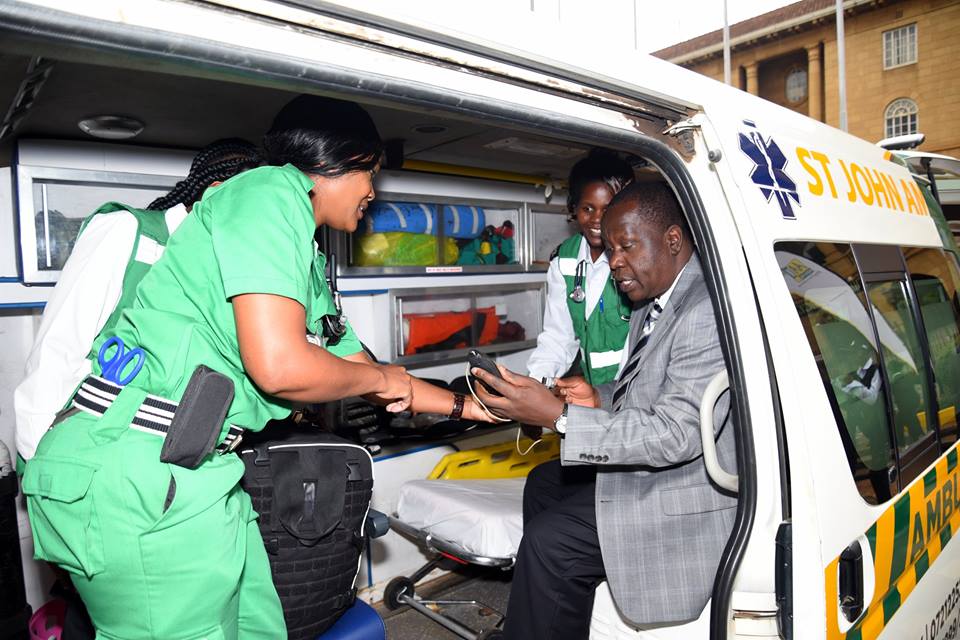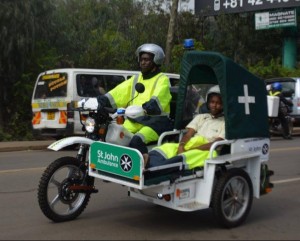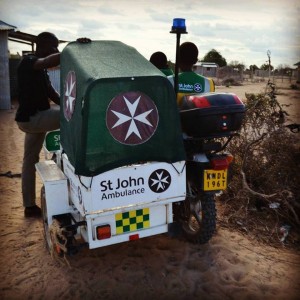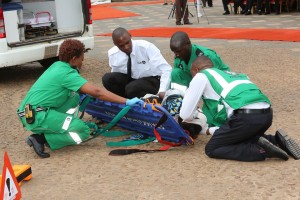
EMS in Kenya - St John Ambulance Service: a historic role to improve assistance
After being declared a British Colony, Kenya saw the birth of the St John Ambulance. In 1939, it introduced the first ambulance and nowadays, it is one of the main emergency medical service providers of the country.
Another chapter for our “EMS in Africa” section. As explained above, we are going to speak about St John Ambulance Kenya, a reality that is keeping on expanding its ambulance services and improving the lives of people in Kenya. To provide a detailed and accurate report on this association, we talked with the Communication Officer, Fred Majiwa, who explains how their service works.
Ambulance service in Kenya: how many ambulance vehicles do you dispose of, and which areas they cover?
“There are 47 Counties so each County has an average of about 10 ambulances. In particular, it happened that the government donates us some ambulance available for some county.
 Specifically, we give our support in the areas of Mombasa, Nairobi, Kakamega, Kisumu, Embu and Nakuru. About remote areas, in Kenya, there are not many of them. But, maybe we can consider a remote area the Tana River County. In case of some casualty there, we move with emergency motorcycles. Generally, they do not carry very specific medical equipment, but they are used to transport patients from the emergency scenario to the hospital. They are very basic motorcycles with a sidebed and equipped with some items for first emergency care. In case we have to face a huge emergency, we also dispatch 4×4 vehicles, but it may be no use because of the conformity of the territory. Tana River is a very hostile territory for cars, and only motocyles are the most efficient way to give medical care to someone. In some cases we also cooperate with an Air Ambulance Service to rescue some kind of critical patient.”
Specifically, we give our support in the areas of Mombasa, Nairobi, Kakamega, Kisumu, Embu and Nakuru. About remote areas, in Kenya, there are not many of them. But, maybe we can consider a remote area the Tana River County. In case of some casualty there, we move with emergency motorcycles. Generally, they do not carry very specific medical equipment, but they are used to transport patients from the emergency scenario to the hospital. They are very basic motorcycles with a sidebed and equipped with some items for first emergency care. In case we have to face a huge emergency, we also dispatch 4×4 vehicles, but it may be no use because of the conformity of the territory. Tana River is a very hostile territory for cars, and only motocyles are the most efficient way to give medical care to someone. In some cases we also cooperate with an Air Ambulance Service to rescue some kind of critical patient.”
How do you organize the dispatch of the St Ambulance Service Kenya?![st. john ambulance]()
“We have a centre of dispatch in Nairobi and it works 24/7 and it receives any type of emergency. So they analyze and verify what kind of emergency it is and they evaluate the dispatch and the equipment.
The majority of our crew is composed of emergency medical technicians, but they are also nurses and clinicians. Of course, it depends on the seriousness of the casualty. We provide the training for EMTs which take about 8/9 months, of which 3 months in clinical to practice. However, there are other centres which provide training. Our crew is composed of employees but only to cover standby events. We rely on volunteers. In our ambulances, we especially use monitors, ventilators and of course, basic trauma items, like splints, extractors.”
![st. john ambulance - kenya]() How do you imagine an improvement in the St Ambulance Service Kenya?
How do you imagine an improvement in the St Ambulance Service Kenya?
“We constantly improve our activity. If we think about our story, we can see that we improved very much over the years. For instance, personnel was full of volunteers, now they are professionals who are skilled and can respond very fast to emergencies. Now we can offer modern support, also thanks to the high number of equipment inside the ambulance.”
St Ambulance Service Kenya – Read also
St John Ambulance Kenya in collaboration with a taxi firm launch an app for emergency response
READ THE COLUMN ARTICLES:
-
NETCARE 911 – The leading emergency and pre-hospital provider in South Africa
-
LifeLink and the Emergency Medical Service in Namibia
-
Air Ambulance in Nigeria – They come from the sky, they are the Flying Doctors!
-
AMREF Flying Doctors is 60 this year – Development and devotion are the key for success
-
Uganda Ambulance Service: When passion meets sacrifice
-
EMS Namibia – Discover the public ambulance service with the Ministry of Health and Social Services
-
EMS in Tanzania – Safe and Sound with Knight Support
-
EMS in Kenya – St John Ambulance Service: a historic role to improve assistance
REFERENCE
St John Ambulance Kenya




